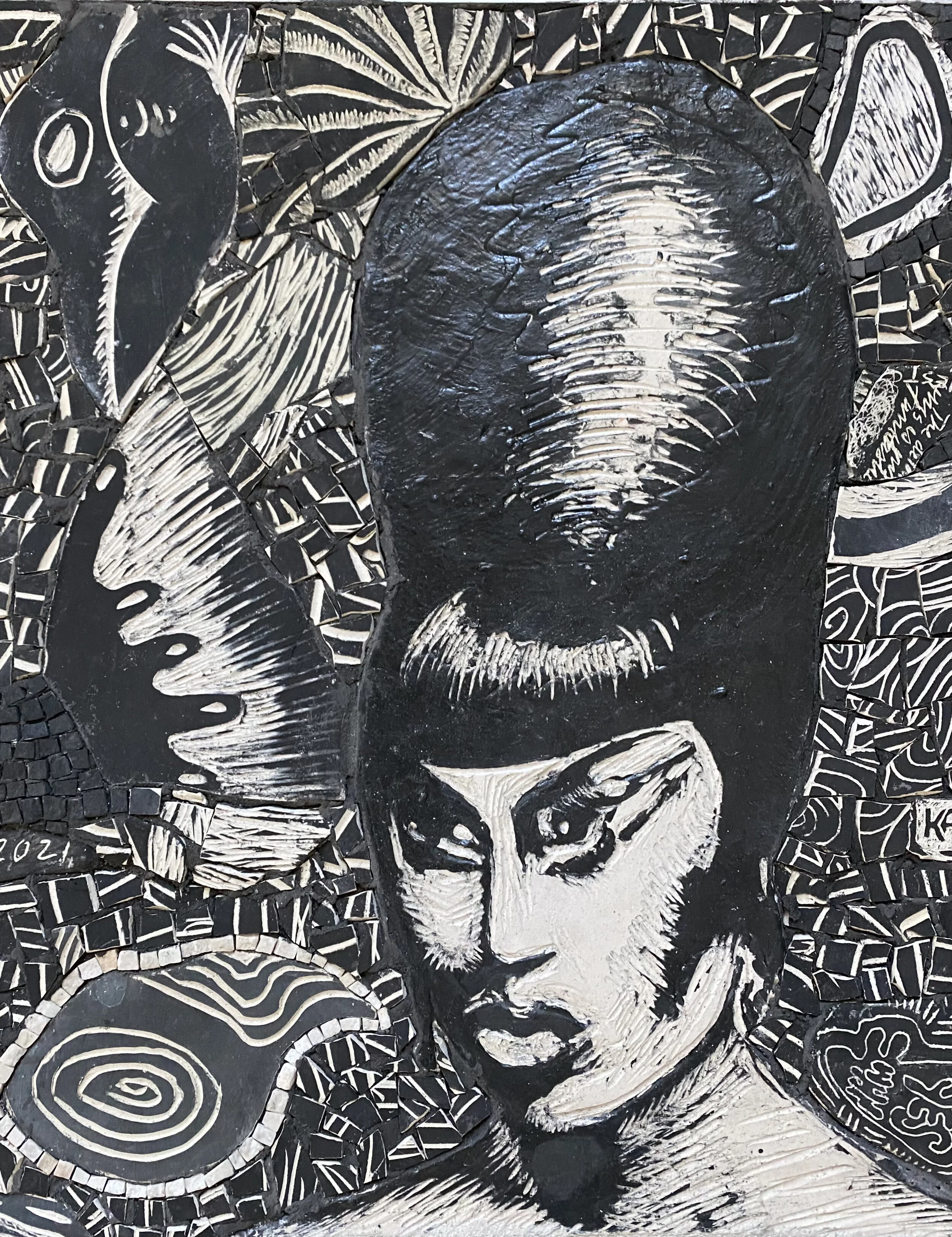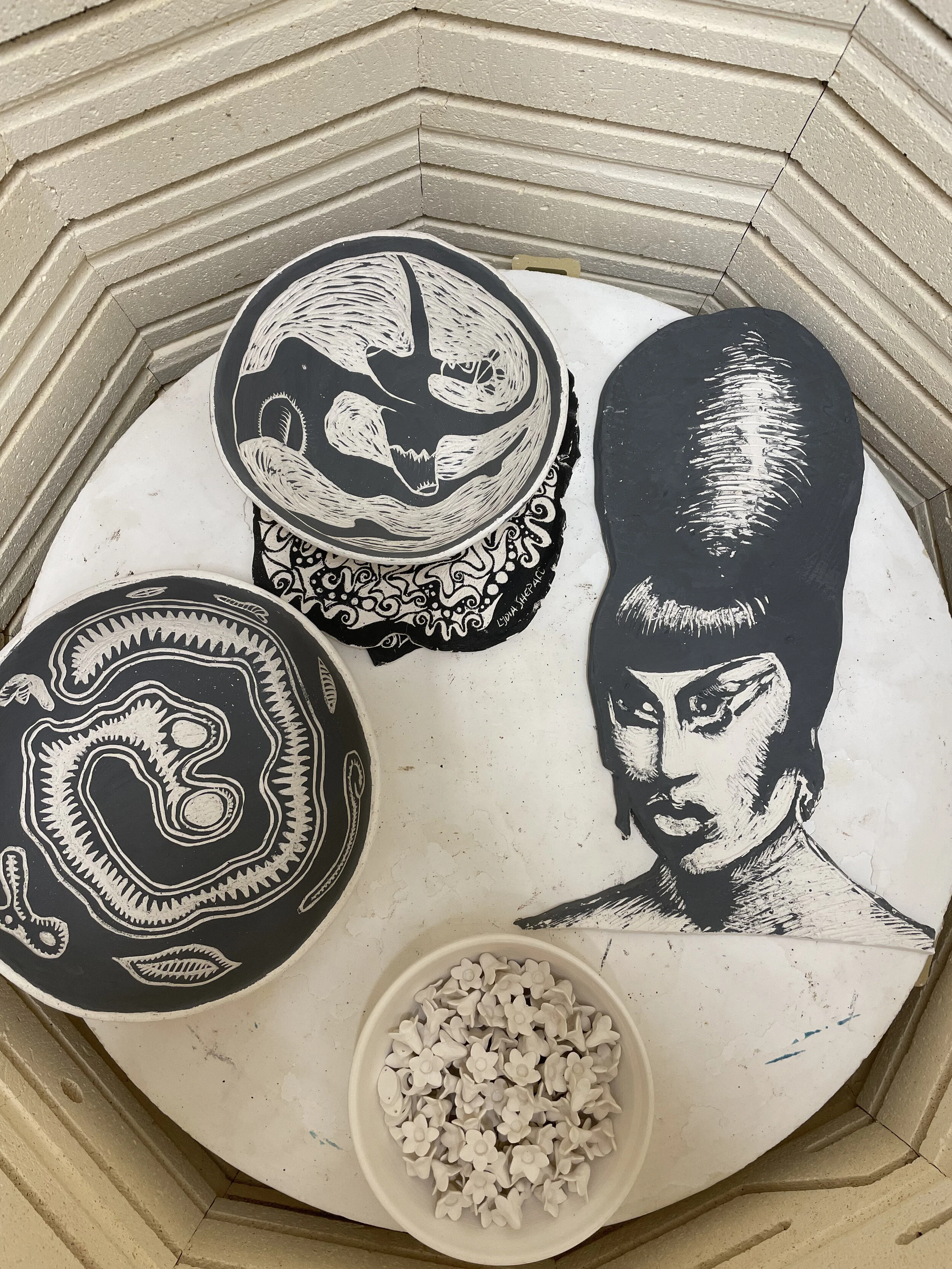October
Processing Fall- October 2021
Musing Meanderings and other distractions…
This month I began to verbalize the different aspects of creating mosaics, the mosaic process which is a muddle of ideas and theories that I need to get a firm grasp on for my dissertation. Thanks to the”Research as Practice” workshop with ABBÉY ODUNLAMI, I’ve begun doing a lot of mind-mapping…. a visual tool that is easy for me to see and explore ideas more clearly in my writing and studio practice.
I think it is important to distinguish mosaic from other art forms and even to distinguish the subcategories of Mosaics itself. Mosaics are ‘specific’ assemblages and they are not collages yet they share the action/process of gathering, collecting, and assembling and reinvention. The collection and the system of discovering found, discarded and repurposed objects is connected to preserving memories materially and tactilely. Reconfiguring and composing objects or pieces is the second part of the process. These shards, nostalgic relics and fragmented and fractured materials are then fixed and set; this step restores and gives new life to what was broken in the action of redemption and repair. Accepting what is broken and reframing fragments is part of an obsessive process to create wholeness and unification from trauma and damage. What was once useless and dysfunctional is reinvented and reframed. From chaos, loss regret and despair there is an action to heal. From that action something can be saved, repurposed and reborn.
There are many types of artworks that involves the gathering, collecting, harvesting of materials that might be designated as mosaics. They can be classified by their materials, by the technique applied, or by the process of production (and/or collection). For example, Roman mosaics were created primarily with sourced and collected stone that was cut intentionally, creating imagery of natural materials set into a mortar bed. Glass mosaics, Byzantine (smalti) and, later Tiffany style mosaics were created with a multitude of colored pieces that were specially cut to illustrate drawings and paintings in a more sustainable medium. Yet the oldest known mosaics from Uruk, Sumaria (3500 BC) were created with handmade elements of Terracotta clay that were embedded into an adobe mud walls. These original tesserae -in this case clay cones- were constructed using three earthly mineral pigments: red and black iron oxide, and white kaolin, each one embedded into the wall following patterns.
Why did these makers go through this arduous and painstaking process when it would be more immediate and easy to paint these designs on a wall or floor? Is it because these mosaics may have been deemed “architectural” rather than “adornment ie painting/fresco? They were more sustainable and could withstand the wear and tear of the elements more so than paint or drawing. But there is something about this process that drives me and is connected to others working in this medium.
There can be a number of reasons why broken materials are so relevant in mosaic art. They can be found like garbage discarded, or abandoned. They may have been broken from a trauma or accident, or perhaps they have been shattered or destroyed purposefully. Things may have been broken in anger or accidentally. We may see things once perfect and flawless yet once they are broken their spirit is damaged and our mortality and fragility is exposed. For some, there is no use for these lost fragmented objects or materials to have a place in the world. The process of creating mosaic, gives purpose to brokenness, reinvents the damaged and is a pathway to finding beauty and meaning in the fractured world.
In my praxis, I break pieces intentionally. I draw I write I make marks into raw clay slabs. I create these tablets that are full of information and imagery. These tablets are my journal. I fire them to become the brittle ceramic documents. Once clay is fired it is forever transformed; it can no longer be broken down by the elements and returned to mud. It has a different chemistry now; what was once soft and malleable and recyclable is, by heat and fire, transformed into something hard and brittle. It is an illusion of permanence. These clay slabs contain parts of stories and emotions and visions are part of a larger narrative. I may make many of these pages or I may make one. These become part of my palette- my library- from which I can break off pieces, tear off sections, stories or images to be placed into and embedded in mortar to become, formally, a mosaic.
This month I created a piece for a group exhibition that is paying tribute to a local trans icon, Shea Coulee. We were asked to do portraits of them using a plethora of photographic images on their social media pages. I selected a dramatic black and white portrait of Shea. I decided to experiment with my usual process and imagery and create something more graphic and literal. I wanted to create them as recognizable yet imagined. After creating the portrait itself by drawing into a clay slab, I used DeBords theory of the dérive to compose the rest of the work. I let my instincts guide me, rather than plan or drawing as a structure ( although the portrait itself is the structure).


